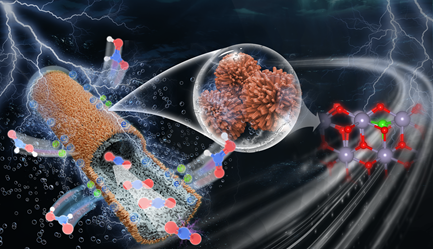Research Progress
In a study published in Angewandte Chemie, Prof. WEI Wei, Prof. CHEN Wei and Prof. SONG Yanfang from Shanghai Advanced Research Institute of the Chinese Academy of Sciences constructed a hierarchical Cl-SnO2@Ni HF Composite hollow-fiber penetration electrode (HPE), which helped to realize high-efficiency CO2 electroreduction to formate in neutral electrolyte at ampere-level.
Renewable energy-driven electrochemical CO2 reduction has emerged as a promising technology for a sustainable future. However, achieving efficient production of storable liquid fuels at ampere-level current densities remains a significant hurdle in the large-scale implementation of CO2 electroreduction.
To further improve the selectivity and conversion rate of formate at ampere-level current density, researchers constructed chlorine-doped SnO2 nanoflowers arrayed on the exterior of three-dimensional nickel hollow fibers by a facile hydrothermal method.
This electrode demonstrates exceptional electrocatalytic performance for converting CO2 to formate, achieving a remarkable formate selectivity of 99% and a CO2single-pass conversion rate of 93% at 2 A cm-2. Furthermore, it exhibits excellent stability, maintaining a formate selectivity of above 94% for 520 h at a current density of 3 A cm-2.
Experimental results combined with theoretical calculations confirm that the enhanced mass transfer facilitated by the hollow fiber penetration effect, coupled with the well-retained Sn4+ species and Sn-Cl bonds, synergistically elevates the activity of CO2 conversion. The incorporation of chlorine into SnO2 enhances electron transport and CO2 adsorption, substantially lowering the reaction energy barrier for the crucial intermediate *OCHO formation, and boosting the formate production.
This work provides valuable insights into the rational design of high-performance catalytic electrodes for CO2 electroreduction.

Schematic diagram of electroreduction of CO2 to formate over Cl-SnO2@Ni HF penetration electrode. (Image by SARI)





